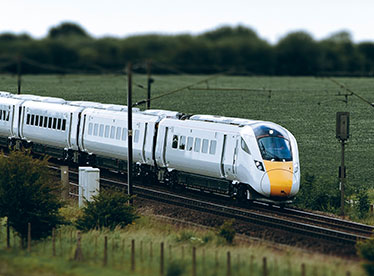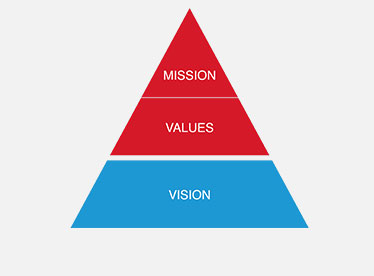-
Products
-
Transportation & Mobility Solutions
Transportation & Mobility Solutions
At Hitachi, we engineer industry-leading transportation and mobility solutions by leveraging decades of knowledge and using high-quality automotive material and components.
-
Energy Solutions
Energy Solutions
We believe the only solution for fulfilling the growing power requirements of industries and society is through a comprehensive portfolio of sustainable energy solutions and delivering innovative high-efficiency energy systems.
-
IT Infrastructure Services
IT Infrastructure Services
Hitachi’s state-of-the-art IT products and services are known to streamline business processes which result in better productivity and a higher return on investment (ROI).
-
Social Infrastructure: Industrial Products
Social Infrastructure: Industrial Products
Within the industrial sector, Hitachi is consistently delivering superior components and services, including industrial and automation solutions, useful in manufacturing facilities.
-
Healthcare & Life Sciences
Healthcare & Life Sciences
At Hitachi, we believe that healthcare innovation is crucial to a society’s advancement. A strong healthcare sector is often considered an inseparable element of a developed society.
-
Scientific Research & Laboratory Equipments
Scientific Research & Laboratory Equipments
Hitachi focuses on extensive research and development, transformative technology, and systems innovation to unfold new possibilities and create new value through scientific endeavors that strengthen the connection between science and social progress.
-
Smart Audio Visual Products
Smart Audio Visual Products
Since 1956, Hitachi audio visual products have provided state of the art solutions to consumers all over the world. It has been our pleasure to design competitive products at the lowest possible prices while maintaining our industry-leading quality standards for your comfort and enjoyment.
-
View All Products
Hitachi Products & Solutions
Hitachi, a technology leader in the U.S., offers a diverse set of products and solutions, and breakthrough technologies for smart manufacturing, green energy and mobility solutions that empower governments, businesses, and communities.
-
Transportation & Mobility Solutions
- Social Innovation Solutions
-
About Us
-
Hitachi in the U.S.A.
Hitachi in the U.S.A.
Discover information about the Hitachi group network across the Americas, upcoming events and sustainability endeavours, CSR policies, and corporate government relations.
-
About Hitachi Group
About Hitachi Group
Explore our leadership team, investor relations, environmental vision, and sustainability goals. Learn how Hitachi is leveraging its research & development capabilities for social innovation across industry verticals.
-
Hitachi in the U.S.A.
- News Releases
- Case Studies
- Careers
- R&D
HITACHI AMERICA ANNOUNCES THE FIRST NETWORK-READY HSS-MUR-300 µ-CHIP READER TAILORED FOR NORTH AMERICA
BRISBANE, Calif., August 7, 2006 - Hitachi America, Ltd., a subsidiary of Hitachi, Ltd. (NYSE: HIT) today announced the first network-ready HSS-MUR-300 µ-chip reader tailored to the North American market. The reader is designed to work specifically with the Hitachi µ-chip RFID (radio frequency identification) 2.45 GHz authentication tag.
The new compact reader features Ethernet 10/100 BaseT connectivity supporting static and DHCP IP address assignment, two antenna ports for maximized read coverage and versatility using approved antennas, and digital I/O ports to support triggers. The reader footprint is a small 5.5 by 4.0 by 1.50 inches. The reader has a typical read range of 12 inches with slightly longer read distances in some applications depending on objects being tagged with the Hitachi µ-chip. The product is FCC and Industry of Canada certified for unlicensed operation. The new readers are available directly from the Hitachi America, Security Solutions Group as a key component in its overall RFID solutions offerings.
The µ-chip was designed by Hitachi as an authentication inclusion for high value items susceptible to fraud such as counterfeiting or diversion. The unique security attributes and size of the µ-chip make it ideal for event ticketing or loyalty program cards. Each 0.4mm square µ-chip contains a 128 bit unique identification code that is hard coded into read only memory (ROM) during chip manufacture.
Any attempt to re-code the ID will damage the chip. Hitachi has provisions and systems in place to never release µ-chips with duplicate IDs, thus ensuring each µ-chip’s authenticity.. Additionally, the µ-chip has been adopted in manufacturing as an auto-ID technology for items produced in complex manufacturing environments where bar codes and other RFID technologies employed to improve process automation have proven problematic. The µ-chip inlets (chip attached to external antenna) have proven very durable.
The µ-chip operates at the globally available 2.45GHz radio frequency which is a much higher frequency than typical UHF supply chain RFID applications that use tags which vary in radio frequency depending on individual country radio regulations. The higher µ-chip frequency permits a smaller and simpler tag and antenna design. The chip's external antenna is a straight 52mm x 2mm aluminized plastic strip.
Hitachi America worked with San Jose, Calif.-based WJ Communications to design and produce the finished device.






